Name Willy Burgdorfer | Role Scientist | |
 | ||
Spouse Lois Rohr Burgdorfer (m. ?–2014), Gertrude See Burgdorfer (m. ?–2005) Children Carl Burgdorfer, Bill Burgdorfer Awards Guggenheim Fellowship for Natural Sciences, US & Canada | ||
Remembering ralph baer willy burgdorfer bobby keys ken weatherwax
Wilhelm "Willy" Burgdorfer (June 27, 1925 – November 17, 2014) was an American scientist born and educated in Basel, Switzerland, considered an international leader in the field of medical entomology. He discovered the bacterial pathogen that causes Lyme disease, a spirochete named Borrelia burgdorferi in his honor.
Contents
- Remembering ralph baer willy burgdorfer bobby keys ken weatherwax
- My lyme disease interview with dr willy burgdorfer by gary engelman bsn rn
- Background
- Career
- Personal life
- Later life
- Honors
- Selected publications
- References

My lyme disease interview with dr willy burgdorfer by gary engelman bsn rn
Background
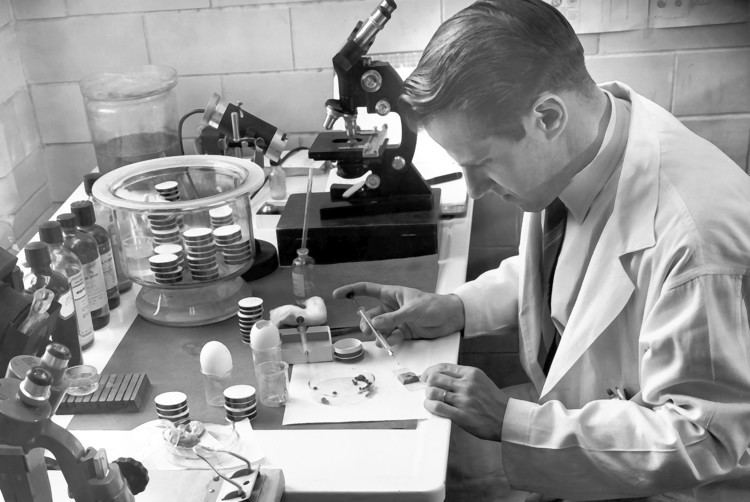
He was born in 1925. Burgdorfer earned his Ph.D. in zoology, parasitology, and bacteriology from the University and from the Swiss Tropical Institute in Basel.

As a research subject for his thesis he chose to study the development of the African relapsing fever spirochete, Borrelia duttonii in its tick vector Ornitnodoros moubata, and to evaluate this tick's efficiency in transmitting spirochetes during feeding on animal hosts. During his college years he was a member of a research team investigating outbreaks of Q fever in various parts of Switzerland and became interested in similar research activities carried out at the Rocky Mountain Laboratory (RML) in Hamilton, Montana, a U.S. National Institutes of Health research facility. He joined RML in 1952 as a Research Fellow, and later became a Research Associate in the USPHS's Visiting Scientist Program. In 1957, he became a U.S. citizen and shortly thereafter joined the RML staff as a Medical Entomologist.
Career
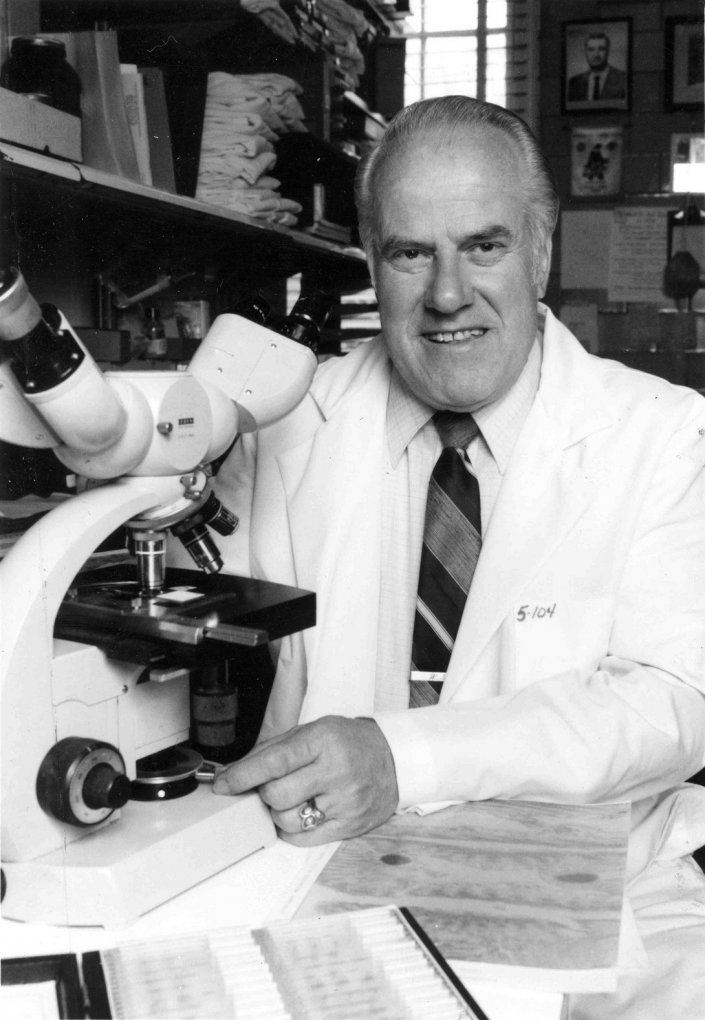
Burgdorfer's research concerned the interactions between animal and human disease agents and their transmitting arthropod vectors, particularly ticks, fleas and mosquitoes. His research contributions are published in more than 225 papers and books, and cover a wide field of investigations including those on relapsing fevers, plague, tularemia, Colorado tick fever, Rocky Mountain spotted fever and other bacterial and viral diseases.
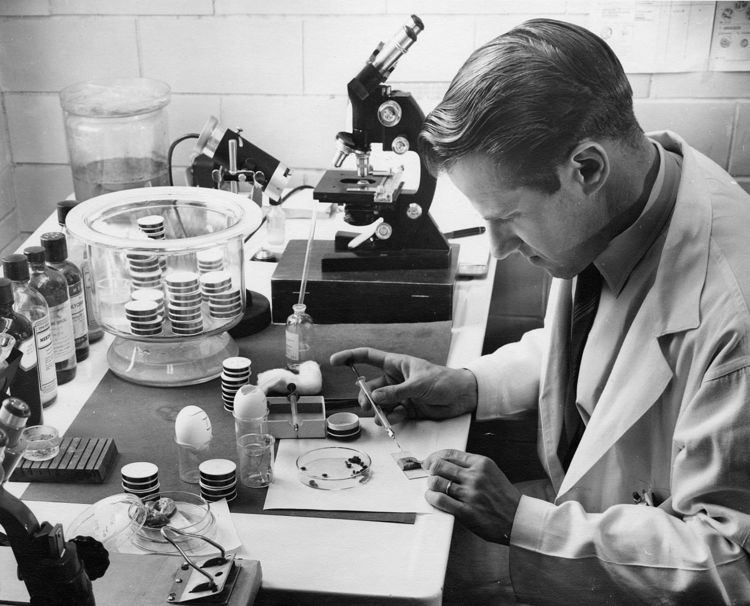
Burgdorfer gained worldwide recognition for his 1982 discovery of a tick-borne spirochete as the long-sought cause of Lyme disease and related disorders in the U.S. and Europe. The agent was named after him — Borrelia burgdorferi.
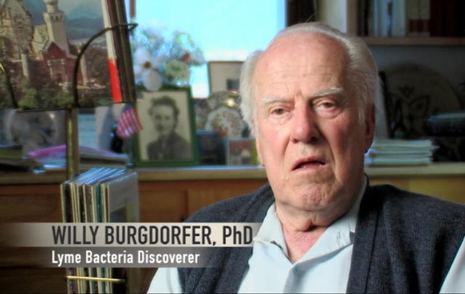
Throughout his career, Burgdorfer participated in a number of World Health Organization (WHO) and other health organization-sponsored seminars and congresses.
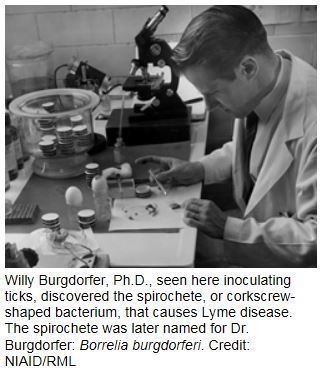
From 1967-1972, he served as Associate Member on the Rickettsial Commission of the Armed Forces Epidemiology Board. For several years (1968–1971) he was also Co-Project Officer of the PL 480-sponsored Research Project on Rickettsial Zoonoses in Egypt and adjacent areas, and from 1979 to 1986, he directed the WHO-sponsored Reference Center for Rickettsial Diseases at RML in Montana, U.S.

Burgdorfer was critical of the path Lyme Disease research had taken over the past 30 years. He believed Borrelia burgdorferi was a persistent infection, and that the current serological testing methodologies needed to be "started over from scratch, with people who don't know beforehand the results of their research."
Personal life
He was married to Gertrude "Dale" See Burgdorfer until her death in 2005. He later married Lois Rohr Burgdorfer; she survived him at the time of his death. He died from complications due to Parkinson's disease on November 17, 2014 at a hospital in Hamilton, Montana.
Later life
Although retiring in 1986, Burgdorfer continued his association with the Rocky Mountain Laboratories' Laboratory of Human Bacterial Pathogenesis as Scientist Emeritus. He was also active on the Scientific/Medical Advisory Committee of the Lyme Disease Foundation. In 1999, he delivered the keynote address at the 12th International Conference on Lyme Disease and Other Spirochetal and Tick-Borne Disorders [2].
